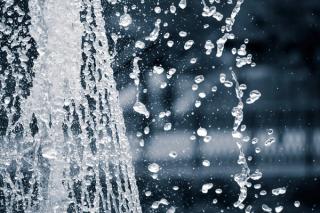
Why social impact must be accounted for like climate and nature
by Clodagh Connolly, Nicola Inge, Andres Schottlaender
View post

The UK public expects that water supplies will continue to be available, but with the average water consumption in the UK increasing every year since 2014, resulting in a use of 146 l/person/day in 2020[1], the risk of severe water stress, where not enough water is available to meet human and environmental needs is increasing. Equally, a reliable water supply is required for industrial and agriculture use – with farming accounting for 70% of water use globally1 – to produce the food and goods the public expect to consume.
Achieving water neutrality means that total water use post-development must be equal or less than water use pre-development, so that water demand does not increase, and where possible, decreases, as a result of development[2].
Climate change is already altering rainfall patterns, and these changes are likely to become more severe in the future.Last summer saw Europe, China and North America parched by extreme heat and limited rainfall. Additionally, summer rainfall is expected to decrease by approximately 15% in England by the 2050s, while higher summer temperatures rise, increasing demand for water. This reduces groundwater recharge and water availability for water abstractions for human consumption and for ecosystem use; with groundwater supplying 65% of drinking water across Europe, this is concerning for human health.
While in other parts of the UK, water demand is often met by surface water abstractions (from rivers), in the south and east of England, as much as 100% of demand for public water supply is met through groundwater abstraction.The over-abstraction of groundwater for agricultural and human use can result in reduced river flows and deterioration of habitats in rivers. Low flows make water bodies more susceptible to algal blooms and nutrient loadings. This leads to negative impacts on water quality and biodiversity, in addition to water availability. Poor quality water requires more treatment before it can be used, leading to increased treatment costs.
There has been greater recognition of the need to ensure a reliable supply of water in recent years, and more understanding that current levels of water usage for domestic, industrial, and agricultural purposes are not sustainable. The Environment Agency in the UK has concluded that 3,435 million extra litres of water per day will be needed for public water supplies in England by 2050, if no action is taken to improve water resilience. This does not include water needed for industry, agriculture, and environmental protection. Many businesses are only just starting to realise the risk that water shortages pose to their operations, and the reliance on water supplies through the supply chain.
In September 2021, Natural England designated the first ‘Water Resource Zone’ in the UK ,meaning all developments in the Sussex North Water Resource Zone must achieve water neutrality. Over-abstraction in this zone leads to adverse effects on the ecology of the Arun Valley, due to water scarcity. All commercial, educational, and residential developments must achieve water neutrality before planning permission can be granted. Other areas in England are likely to be affected by this requirement in the future, particularly in the South East and East Anglia.
As this issue becomes more widespread, many businesses and organisations will see that water shortages pose significant risks to their business, as limitations on water use may lead to restrictions on the type of crops which can be grown, and the industrial processes which can be used in the areas affected.
The benefits of water neutrality include reduced costs, greater supply chain security, reduced environmental impacts, resilience against extreme events, and reputational enhancement.
The emerging requirement to demonstrate water neutrality leads to the need for guidance and strategy to manage the risks. It is essential to demonstrate that the water management hierarchy is being followed and that actions are measurable and achievable within realistic timescales.
A corporate water strategy will increasingly be required to achieve business resilience. This includes establishing a water management plan and goals which are aligned with the overarching business and sustainability strategies. Water risks and opportunities need to be identified and monetised, targets set, and site specific actions prioritised to minimise risk, maximise performance, and optimise costs (reduce water demand, re-use and recycle water). This will help businesses make more informed decisions to protect against water quantity and water quality constraints to growth.
Water resource assessments can identify opportunities to improve water security, and enable business continuity, as well as to mitigate climate change and biodiversity loss. If you would like to conduct a water resource assessment, or discuss your water management plan, please get in touch.
-------------------------------------------------------
[1]Source: Water UK, accessed August 2023
[2]Adapted from ‘A review of water neutrality in the UK’ (Waterwise, February 2021)